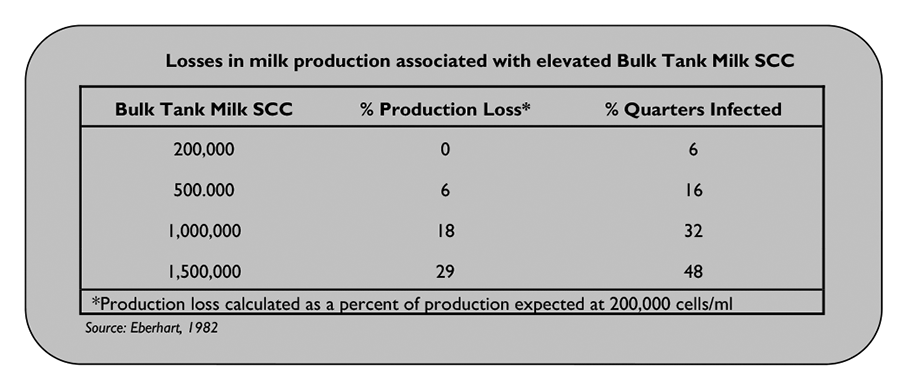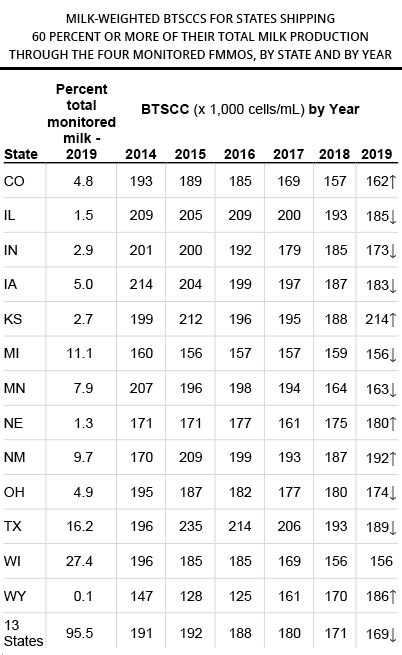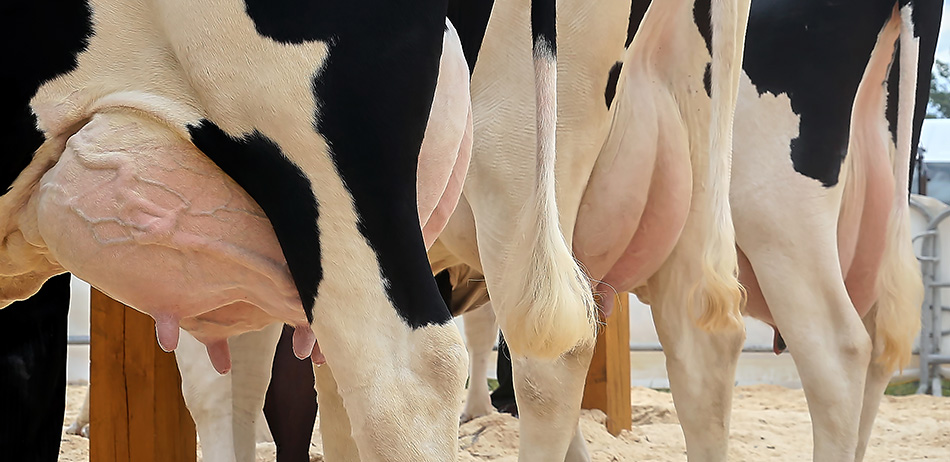Using Bulk-Tank Somatic Cell Counts for Monitoring Milk Quality and Udder Health
Bulk-tank somatic cell counts (BTSCCs) are measured and monitored from Federal Milk Marketing Orders (FMMOs) to determine the quality of the milk supply in the U.S. BTSCCs are defined as the number of white blood cells, secretory cells, and squamous cells per milliliter of raw milk. Milk processors monitor BTSCCs in the nation’s milk shipments using standards outlined by the Pasteurized Milk Ordinance (PMO) to ensure that the highest quality milk is being produced for the nation’s dairy consumers.
“In 2018, the milk-weighted geometric BTSCC mean in the United States was 172,000 cells/mL, a decrease from 181,000 in 2017.”
(Source: Determining U.S. Milk Quality Using Bulk-Tank Somatic Cell Counts, 2018).
Relationship between BTSCCs and udder health
BTSCCs are also good indicators of overall udder health. A study published by the University of Tennessee Institute of Agriculture reported that an uninfected udder will typically have a BTSCC of less than 100,000 cells/ml. When the count is 100,000 to 199,999 cells/ml, the presence of infection can only be ruled out by bacteriological testing.
A BTSCC of 200,000 cells/ml or more is a clear indication that an infection 1) is occurring, 2) has occurred recently, or 3) the mammary gland is still recovering from an infection, which may take days, weeks, or longer. Typically, the more severe the infection, the higher the BTSCC will be.

Read our earlier post, Somatic Cell Counts (SCC) Impact on Dairy Farmers, to better understand how lowering SCC leads to increased profits.
Michigan State University Extension dairy educators recognized the importance of using SCC data to determine dairy herds’ overall udder health status. SCC data for individual cows also help focus on those specific cows with udder infections. (Source: Monitoring udder health on dairy farms).
Quality of milk from FMMOs and mastitis
In 1983, the United States Department of Agriculture (USDA) initiated the National Animal Health Monitoring System (NAHMS) to collect, analyze, and disseminate data on animal health, management, and productivity across the United States.
In the case of raw milk, the USDA collaborates with the National Mastitis Council and the Federal Milk Marketing Orders (FMMO’s) to publish a yearly monitoring report of U.S. milk quality using bulk tank somatic cell counts.
“In 1991, the National Conference on Interstate Milk Shipments (NCIMS) recommended lowering the US standard for somatic cells in grade A milk from 1.0 million to 750,000 cells/mL (FDA, 1991), and that standard was implemented in July 1993 (FDA, 1993).”
In June of this year, the USDA published the latest report from data collected in 2019, showing a positive downward trend.
- The BTSCCs for each of the four FMMOs in 2019 were within 5,000 cells/mL of their respective 2018 values.
- Producers that shipped 500,000 lb of milk or more per month had lower BTSCCs than producers that shipped fewer than 500,000 lb per month.
- BTSCCs peaked in August, while the percentages of fat and protein in milk were lowest in July.
- Improvements in management practices on U.S. dairy farms are responsible for the decrease in BTSCCs and improvement in milk quality since 2002.
- In total, 13 states marketed 60.0 percent or more of the milk produced in their states through the four monitored FMMOs and accounted for 95.5 percent of the monitored milk.
- Compared with 2018, 7 of the 13 states had decreased BTSCCs in 2019, 5 states had an increased count, and Wisconsin was unchanged.

(Source: Determining U.S. Milk Quality Using Bulk-Tank Somatic Cell Counts, 2019 )
Reliable aseptic and representative sampling made simple
QualiTru Sampling Systems is committed to helping the U.S dairy industry continue to reduce bulk tank somatic cell counts and improve the quality of the nation’s milk supply. Our sampling and process monitoring products provide management tools to help dairy farmers fine-tune and monitor milk quality on their dairy operations.
QualiTru’s sampling products are extremely easy to use and implement into your system. Designed for process monitoring for such applications as mastitis control, microbial contamination, component verification, and regulatory compliance, we provide cost-effective solutions for the highest level of quality assurance.
- Learn more about QualiTru’s representative sampling solutions for dairy farms.
- View our catalog of sampling and process monitoring products




